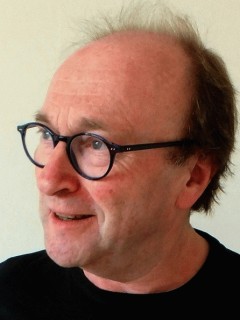Barcelona in May. It was always going to be tough. About 160 qualitative folk from 23 countries in a rather smart hotel sharing views and ideas, gossiping, drinking, dancing and exploring Catalonia's culinary delights.
The challenge? The 38 speakers giving the 25 papers over the two days had to cheat a version of the "Impossible Triangle". The 20-minute slots required presentations short enough to stay interesting, momentous enough to be intellectually satisfying and measured enough to allow assimilation and thought. English would be a foreign language for over a quarter of the delegates.
The previous AQR/QCRA conference was 2005, so much has changed — particularly regarding what keynote speaker Jose Antonio Rodriguez called the "2.0 World". First, he highlighted that the growth in consumer authority through shared web content has meant a paradigm shift from "control" to "influence" as the way to relate to brand audiences. His second main point was that behavioural analysis was now more useful than any traditional demographic or personality-based segmentation, given the palette of identities the virtual world allows. What people do is at least measurable: who they are is increasingly elusive.
He urged the research community to develop more — and more inventive — tools for understanding a world of constant interaction, commentary and sharing.
Encouragingly, it seemed that this development work is under way in a variety of forms, with trail-blazing activity on several fronts. A major "theme" to emerge was the increased appropriateness and effectiveness of co-creational enquiry, both between researcher and respondent and researcher and client.
Less may be more
Researchers, by sharing some of the power inherent in the enquiry process (echoing the move from "control" model of marketing to the "softer", more feminine one of influence), may increase its capacity to generate insight. Less may be more.
The gradual mainstreaming of ethnography and cultural anthropology was reflected, too, in papers showing how such techniques strengthened enquiry methods, illuminating areas of behaviour and attitude that would otherwise have remained hidden.
Several excellent case history-based papers demonstrated how technological NPD, doctor-patient transactions and brand communications could be enhanced by getting a better handle on the "real life" context of product usage and the users" "feelings in the moment" — two dimensions largely missing from conventional interview methods.
"Research 2.0" itself was of course widely covered and emerged as being thought of as (a) here to stay, (b) punching above its weight in terms of "noise", © largely driven presently by "quanties", who find it more interesting than do "quallies" and (d) lacking in theoretical underpinning and rigour.
Qualitative research needs to get more involved with the virtual world because successive "online generations" will live comfortably in both real and virtual worlds. The other reason for quickly developing respectable virtual techniques is that there is a danger that online qual will simply become an extension of online quant and will be devalued as such. Reclaiming the professional agenda was a further theme, along with what is hopefully the final pronouncement that groups are not dead. Researchers were exhorted to demand more experimental freedom and to re-educate clients into allowing more time for analysis and interpretation. Ethical vigilance was urged upon us, too, in parallel with innovation.
There was much more, besides: cross-cultural comparisons, progress reports from countries where our industry is younger, some sound practical advice and at the other extreme and some excitingly elevated thinking about the nature of what we do.
Whizzbang ideas
The whizzbang ideas harvest included: a highly innovative Second Life qualitative research facility where remote respondents" avatars form groups; "imaginary diaries"; respondents giving reflexive commentary on previously-recorded video of themselves; respondents vlogging product experiences direct to client; and "proxy ethnography" — with a client posing as a psychotic patient to discover how doctors made prescription decisions. This last method was the talking point of the conference — a brave invention, but one which some thought crossed the ethical line.
Runner up for both Best Paper and Best Presented Paper was the Pavarotti-bescarved Luigi Toiati (who won AQR's Prosper Riley-Smith Effectiveness Award in 2003). He gave a bravura performance explaining how synaesthesia can be effective in identifying emotions in their initial stage, before they are influenced by their cultural environment and rational processing.
Best Presented Paper went to Andy Barker for his luridly entitled "Pimp My Qual", a stimulating and eloquent airing of his concerns about "ethics creep" accompanying the search for ever more innovative qualitative techniques and with easily the greatest number of memorable quotes.
Best Paper went to the marvellously articulate Rosie Campbell who successfully cheated the triangle with her adroitly delivered plea for more attention — and time — to be given to textual and narrative analysis at the interpretative stage.
Sincere thanks must go to co-chairs Philly Desai and Mark Lovell, plus their ten-strong team for a highly stimulating, perhaps "best ever" event, a gallimaufry of extraordinary things to think about, plenty of good ideas to steal and/or refine (why we go, no?) and a number of "timely reminders", interspersed with fine tapas or El Bulli-style gastro-Catalan. It was hell. Prague next time then?


